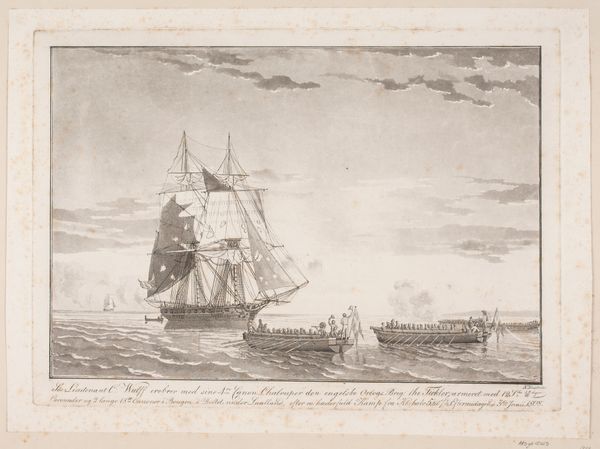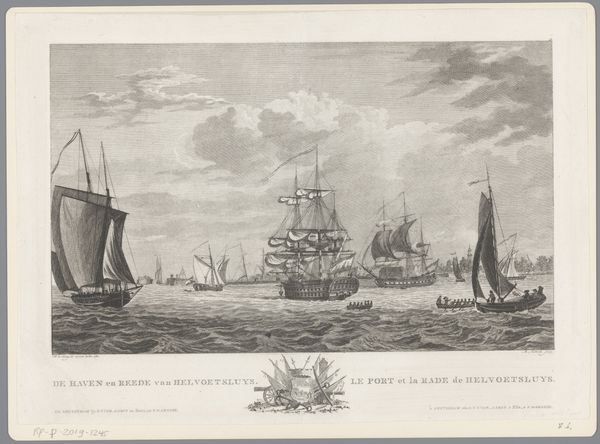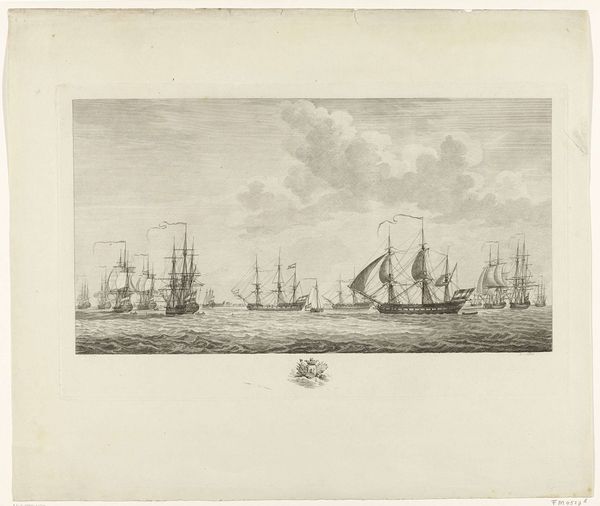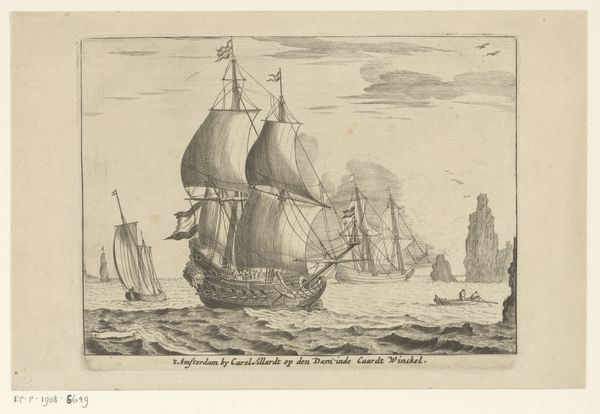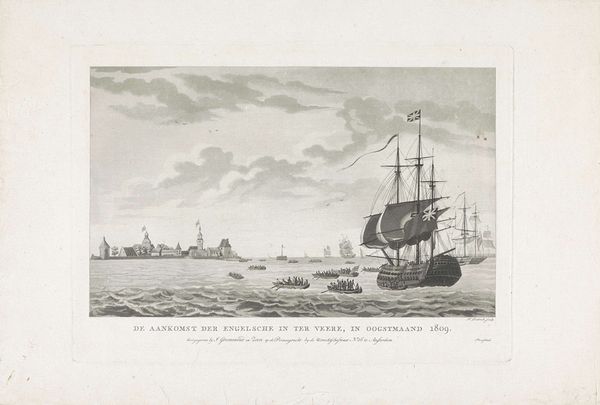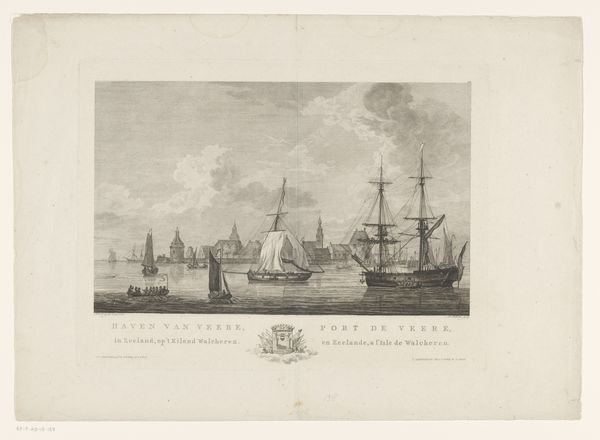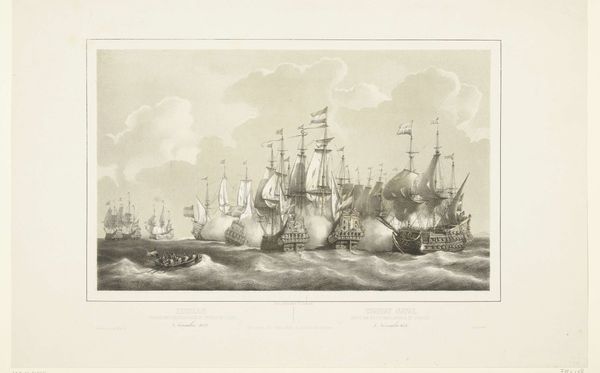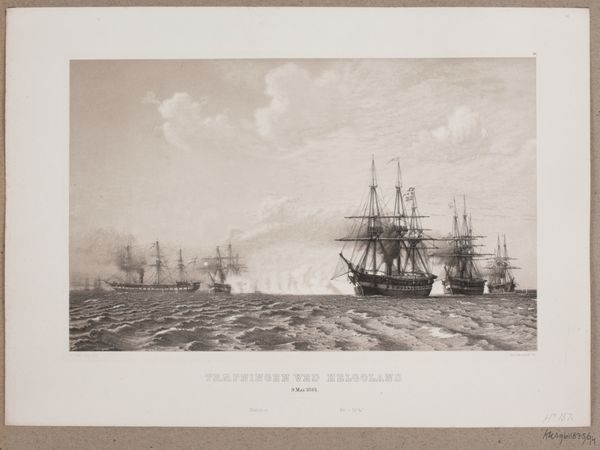
print, engraving
# print
#
landscape
#
etching
#
romanticism
#
engraving
Dimensions: 223 mm (height) x 340 mm (width) (plademaal)
Curator: This print, created around 1843, is entitled "Orlovskib og to fregatter." It’s an engraving, an etching really, showcasing naval vessels at sea, residing here with us at the Statens Museum for Kunst. What is your initial reading of this image? Editor: An isolated grandeur, perhaps? It's visually quite subdued in tone, very Romantic in its evocation of the sublime through these ships, tiny against that vast, light-filled sky and water. Almost melancholy in its quietude. Curator: Exactly! These kinds of maritime images are so interesting in terms of the power dynamics they present. Here we have these very concrete symbols of Danish naval power. Note how meticulously rendered are the sailing ships—the "Orlovskib" (ship of the line) alongside two frigates—likely meant to project stability and strength, yet the technique, the subtle tonality… Editor: Makes them feel almost ghostly? They are crisp but it’s definitely missing some dynamic vitality... What are we to infer from that middle ship shooting a cannon in between her 'sailing' colleagues. It feels caught between an aspiration to the glorious history of sail and the limitations that progress would visit? Curator: Ah, that’s a astute point to raise, in the mid 19th century Europe began to really feel and see progress via the steam engine. These naval ships, however precisely represented in line and shape, take on an aura of longing that mirrors a psychological, as well as an actual nautical navigation of a certain world of progress. These were potent images in terms of national self-representation. Did such visuals speak, for the lack of a better term, to the zeitgeist? To cultural attitudes of the time? Editor: Oh, certainly. Maritime imagery had a long history of being deployed for nationalistic and political ends. These types of artworks visually consolidate feelings of a cultural need. That could mean several psychological needs at once! Safety, confidence, but also regret at the pace of the changing world. The vessels are a focal point, to the viewer and to us even now as we ask them to conjure such important social contexts of their time. It is indeed melancholy, you feel almost the opposite sensation that one might want such an image to provide its audience! Curator: It’s an artifact that has been imbued, unconsciously perhaps, by something we might today identify as being much larger, that of psychological representation... Editor: Well put! I suppose what I appreciate most is how a seemingly straightforward maritime scene can hold such depths when viewed through the lenses of history and cultural memory. Curator: Yes. An ocean of possible connotations in these still waters, it would appear.
Comments
No comments
Be the first to comment and join the conversation on the ultimate creative platform.
